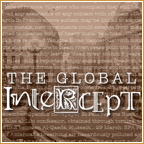SUPER TUESDAY PRIMARIES: Balloting Irregularities Reported in Los Angeles County, New Jersey & Georgia
As the most widespread presidential primary vote in US history took place yesterday, across the continent and beyond (American Samoa also voted), there were glitches, confusion and unjustifiable waits in states across the country. Three examples stand out: touchscreen machines failing in New Jersey, a suspiciously confusing ballot in Los Angeles, and multiple irregularities in Georgia, where long waits, questionable ID laws and more failing Diebold machines made voting a serious challenge by any rational standards.
In the case of Georgia, the campaign of Sen. Barack Obama (D-IL) —who won the state convincingly— has requested an investigation into irregularities that may have prevented some from casting votes, including the up to 90-minute waits reported and isolated cases of voters then being directed to alternate polling locations and an alleged campaign of phone calls to elderly voters telling them they could vote by phone (a lie, apparently designed to prevent their voting).
In New Jersey, Governor Jon Corzine was forced to stand idle while his touchscreen voting machine did the same. Two touchscreen machines at the "Hoboken Fire Department Engine Company No. 2 on Washington Street would not work for about 45 minutes as the polls opened", according to a report by Brad Friedman, sourcing the Associated Press. Gov. Corzine was forced to wait at least 45 minutes while the problem was repaired. The votes were non-verifiable electronic votes, and FOX News reported that there were no provisional ballots made available at the polling place.
New Jersey is home to Rep. Rush Holt, a Democrat, who is the leading proponent in Congress for voter-verified paper trails for all touchscreen machines. He has two bills currently pending debate, which would mandate a nationwide voter-verified paper trail standard. Some complain that more appropriate legislation would be to ban all touchscreen machines outright, due to their numerous vulnerabilities to computer error, human error and tampering.
In Los Angeles, perhaps the most serious irregularities occured. On a registration form that precedes the ballot itself, and that requires voters to select their party affiliation or non-partisan affiliation, selecting "Independent" had the effect of registering the voter, likely inadvertently, as a member of the "American Independent" party, making them ineligible to vote in the Democratic primary.
Independent or unaffiliated voters eligible to vote were required to select either "Decline to State" —which grammatically does not mean there is no party affiliation—, or otherwise "DTS" or "Non-partisan", all of which appear unrelated to the interest of an independent voter interested in choosing a Democratic candidate of preference.
Any independent voter who selected Independent (capital "I") and not DTS or the related option, will have no vote counted in the California primary. The Los Angeles city attorney Rocky Delgadillo has requested an inquiry into the problem, which could disenfranchise literally hundreds of thousands of Californians. The specific problem is exacerbated by the fact that there is no logical reason for voters to select the bubble, since they have requested the Democratic ballot and are either officially registered or not with any given party.
Delgadillo issued a statement saying "I urge the Secretary of State and County Registrar to do everything within their power to ensure that every vote is counted, and to carefully weigh voter intent against this confusing Los Angeles County ballot design. [...] Los Angeles' non-partisan voters must not be disenfranchised because of a confusing ballot design."
[ You can find more on voter-verified paper trails and the all-votes-count standard at VerifiedVoting.org, which also hosts a map showing which states still use unverifiable paperless touchscreens, and which states require paper trails, manual recounts, and what level of the legislative process pending legislation may be at, at present. ]
- Brad Friedman: "More Details on the 'Double Bubble Trouble' in Los Angeles County"
- Why Tuesday.org: "Double Bubble Trouble (the LA County Ballot Confusion)"
- HuffingtonPost: "California's Butterfly Ballot"
- Ascribe: "Super Tuesday. And Wednesday, and Thursday" [by Tova Andrea Wang, Democracy Fellow at the Century Foundation]
- LA Times: "Glitches are the early front-runner in California"
- Brad Friedman: "Problems (and Confusion) at L.A. County Polls Today"
- SF Chronicle: "Calif. election officials expecting extended vote count"
- SF Chronicle: "Long lines of voters - may be record turnout"
- John Gideon (BB): "NJ Governor Delayed Casting Vote as Voting Machines Inoperable in Hoboken"
- Emily Levy (BB): "Voters Face Long Lines in Georgia as Voter ID Laws and Diebold's Crashing E-Pollbook System Slow Process"



















No comments:
Post a Comment